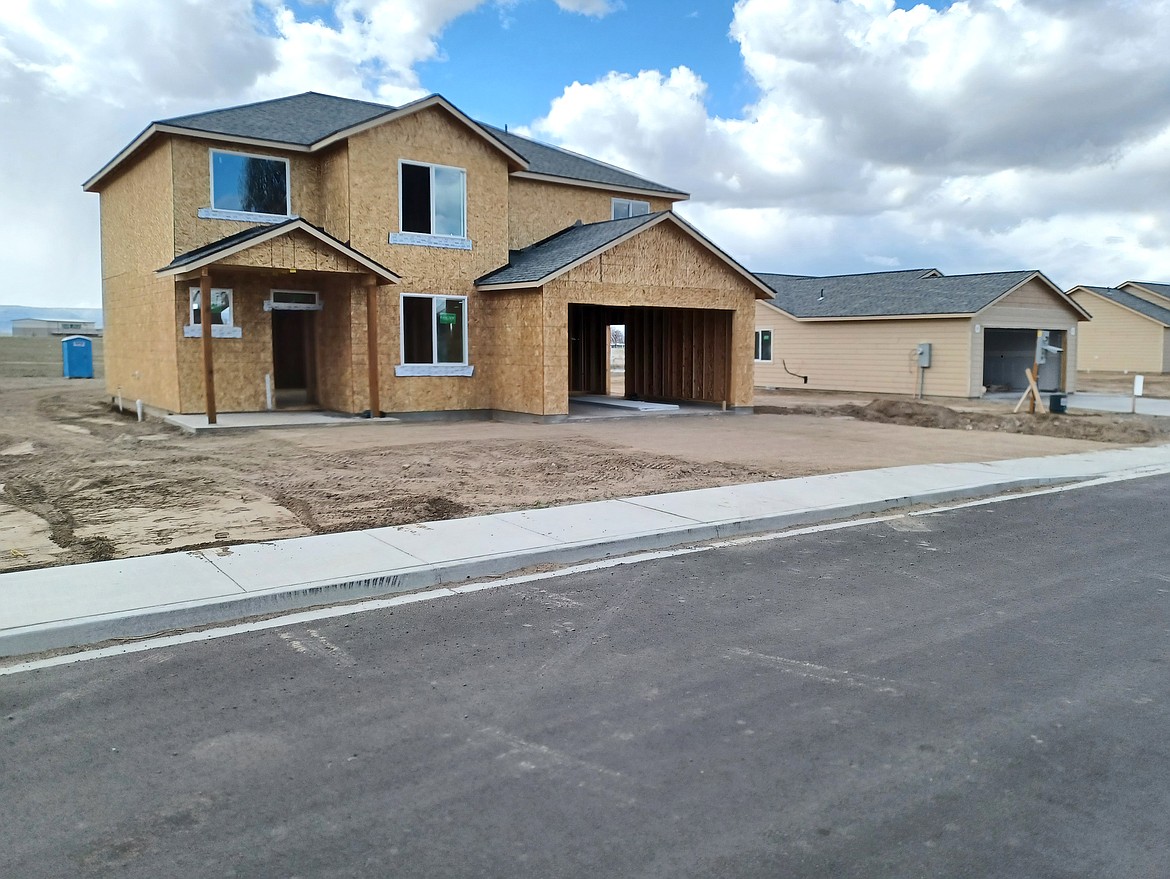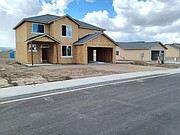Building up: Home construction in eastern Washington fighting a multi-sided battle
EASTERN WASHINGTON — It’s no secret that there’s a housing crunch in eastern Washington. There isn’t enough affordable inventory to meet demand, so how is the industry dealing with the situation?
“Between the regulations and increases in code that continue to pile up here in Washington state, as well as land availability and a shortage in the workforce, there are a lot of things that are creating the perfect storm for us not to be able to catch up to kind of the needs that we have in our state,” said Lindsay Brown, executive officer of the Central Washington Home Builders Association.
In the last 30 years or so, Brown said she estimates that the population of Washington has increased at a rate of about 60%. In that same time, the housing inventory has only grown at a rate of about 33%.
According to both Brown and Joel White, executive officer with the Spokane Home Builders Association, the reasons can be traced to the Three L’s: land, labor and lumber.
Land
“Land issues (are) tied to the Growth Management Act from our state, and a lot of environmental regulations in the state of Washington that limit the ability of builders to build outside that urban boundary,” White said.
The Growth Management Act, passed in 1990 by the Washington Legislature, was designed to limit urban sprawl and preserve rural lands from excess development. The act designated “Urban Growth Areas” within which cities are allowed to grow and outside of which they are not. Cities and counties are required to reevaluate their growth patterns every 10 years.
“How the municipalities count the existing inventory that we have, and how they forecast population growth are just a couple of the things that can really influence how much land is set aside for housing,” Brown said. “In some areas, they don’t want to grow, in others they do.”
One effect of the GMA has been to make it difficult to accommodate a growing segment of the population that doesn’t want to live in densely-populated urban environments like the Puget Sound area. Transplants from urban areas often find that their money goes further in rural areas, and that the way of life here suits them better, White said.
“(There) has been the consistent demand from folks moving in from other markets, and it hit in areas like Moses Lake, Spokane and Coeur d’Alene, even Boise,” White said. “And it basically just put gasoline on the fire in 2020, after COVID, when businesses were not allowed to work. That opened the door for people to work remotely. So they may still have a job in downtown Seattle or in San Francisco, or even in downtown Portland, but they are able to work remotely from Ephrata – wherever they can get high-speed internet.”
The wide open spaces of eastern Washington don’t automatically translate into lots of living space, Brown pointed out.
“We don’t have that much available near what our normal infrastructure would support,” she said. “Yeah, building a remote house is great. But also, most families want to be near grocery stores and gas stations and things like that.”
Labor
If there’s going to be housing, somebody has to build it. Unfortunately, those somebodies have been hard to come by for some time, White said.
From about the 1990s to 2007, he explained, builders had a large workforce at their disposal. But when the market crashed in 2008-09, they had to downsize and let a lot of their workers go.
“So they got very lean and mean,” he said. “And then all of a sudden, when things ramped up, there was nobody to hire.”
Changing demographics is another problem, White said. Nationwide, about 20% of the construction workforce is expected to age out of the job market in the next decade, he said, and schools aren’t training enough students in the trades to make up the difference.
According to Statista, a firm that tracks population data, the Baby Boomer generation – born between 1946 and 1964 – makes up about 21% of the U.S. population. That makes that portion of the workforce 59 years old or older and looking to retire at age 67 or younger, on average.
The SHBA has partnered with associations from other areas and in other trades to start a program to counter that shortage, White said, called “Frame your Future.” The program entails outreach in schools, getting students into building tiny houses or sheds.
Frame your Future also takes aim at young adults, he said.
“We’re trying to get those 20-plus-year-olds who went to college and don’t have a career path or never found a career or that may be underemployed, and trying to get them into construction, talking about the bigger issues: you can have a great quality of life and make good money,” White said. “People understand that plumbers and electricians and framers get paid pretty well.”
Until that labor shortage is corrected, homes are going to be effectively backordered, Brown said.
“A lot of our builders are just giving families, people who are interested in building homes, longer timelines,” Brown said. “‘Oh, I’m booked a year out? Oh, no, I’m booked until 2025.’ Because there’s so much that they want to do, but (don’t) have the people to do it.”
Lumber
The third part of the delay is material. The various supply chains are all interlaced, White said, so a shortage in one area can affect other areas.
“So we were doing fine, leading up to covid, then we had a shock and supply chain disruptions,” he said. “That priced out a number of people because lumber went from less than $500 per 1000 board-feet all the way up to $1,500 per 1000 board-feet … Once lumber came down, guess what? Concrete went up, and we have a concrete shortage. I went and toured one of our large appliance providers recently, and they had chip shortages. There’s microchips that they didn’t have for all the appliances.”
Electricity is a large part of home functionality, and there are shortages associated with that as well.
“One (holdup) right now is electrical panels,” Brown said. “There’s a shortage, and those can be months out. If you can’t get the electrical stuff set up and in, you can’t continue to build the rest of the house.”
Brown said one thing that would ease the crunch would be for local governments to streamline the permitting process.
“Reform on our approval processes for permits, I think, is one way that we can support the attainable housing movement,” she said. “We understand that regulation is needed. It’s important, it’s worthwhile, it keeps the standard of homes up to what is really respectable. But some of those regulations that we’re seeing are arbitrary or burdensome. They’re putting a lot more challenging scenarios in front of builders.”
“People will say, ‘Well, it’s the greedy developer,’” said White. “The issue is, all these factors hit at one time. Usually, we might have a price spike, because of labor or land or other things, (but now) all these things are coming to a head all at one point in time.”
Looking ahead
A change is desperately needed, both Brown and White said, because the crunch isn’t abating and home ownership is crucial to a community.
“You have lower teen pregnancy rates when you have higher homeownership rates,” White said. “You have more (people) voting; they’re more tied to their communities when they have ownership versus rental.”
Despite the challenges, Brown said the industry will push forward to meet the demand as well as it can.
“It’s hard to say what’s coming down the pipeline, but we are always going to attempt to fight the good fight,” Brown said, “so that the American dream can be met. Housing becomes one of those telltale indicators of success in life. And, you know, the less of that we see, the more worried we should be.”




